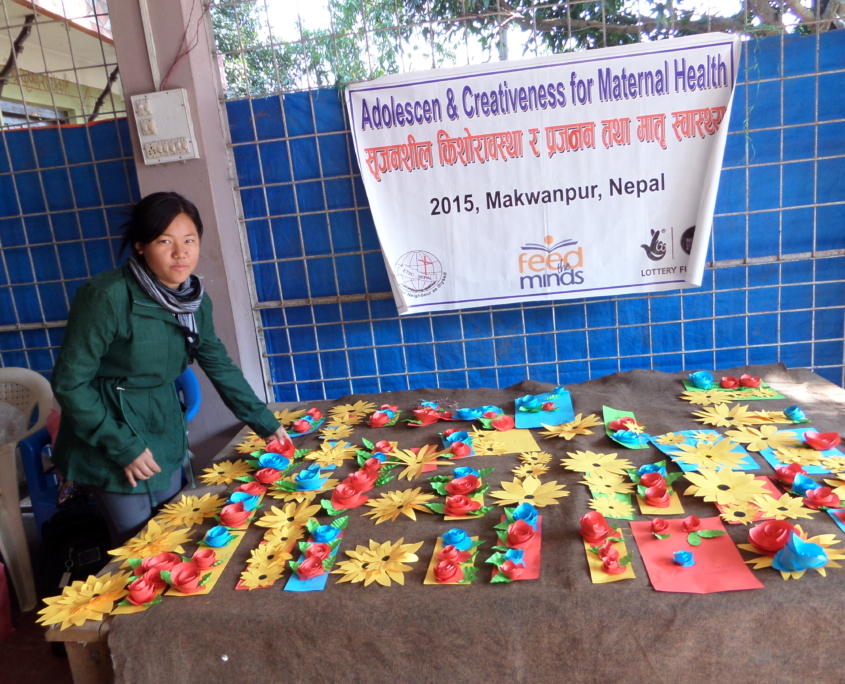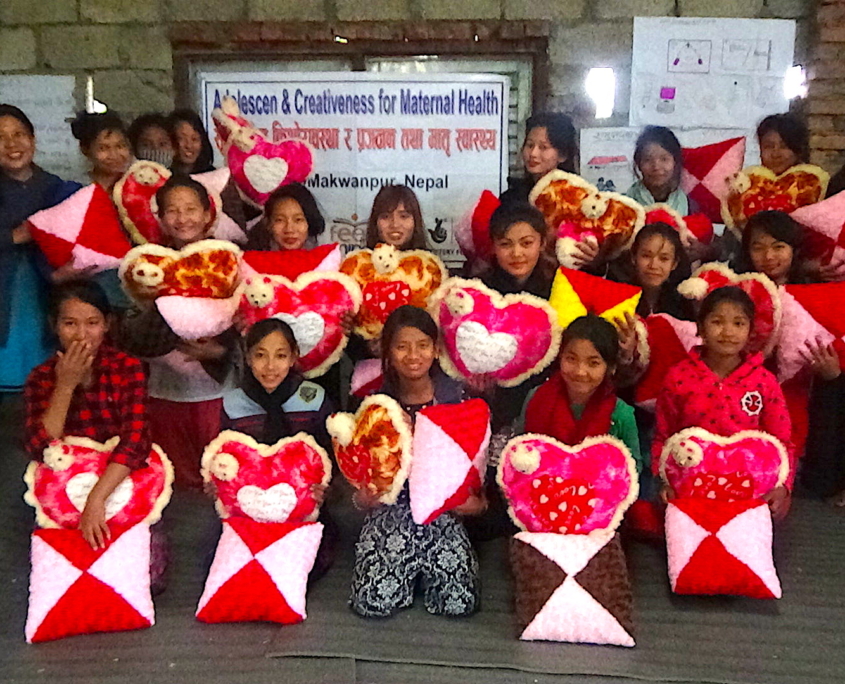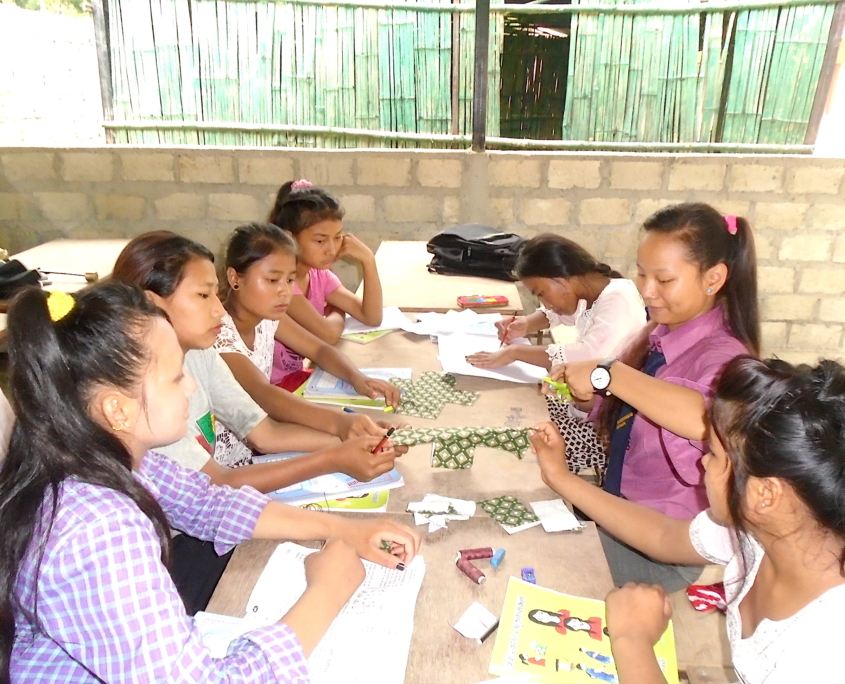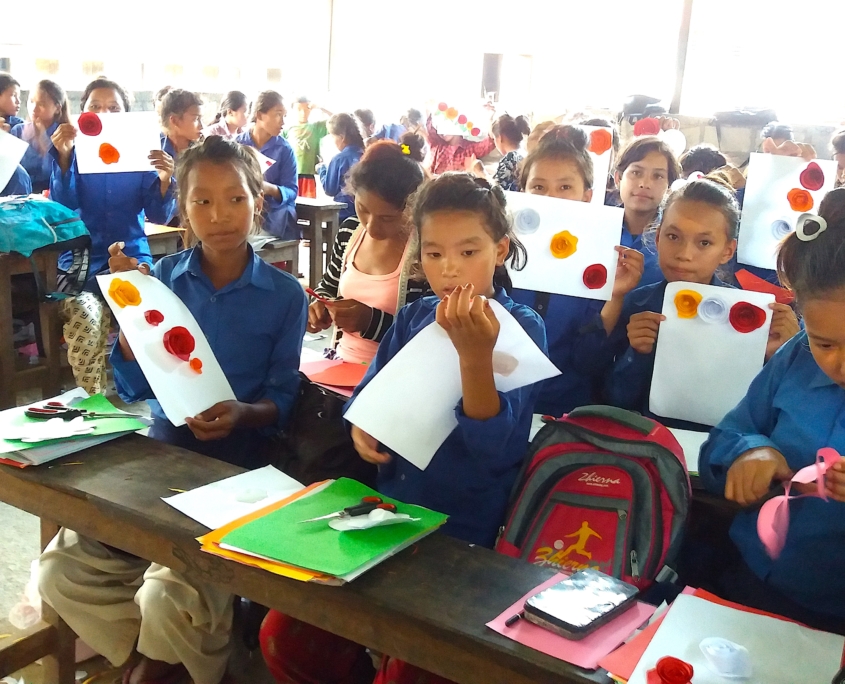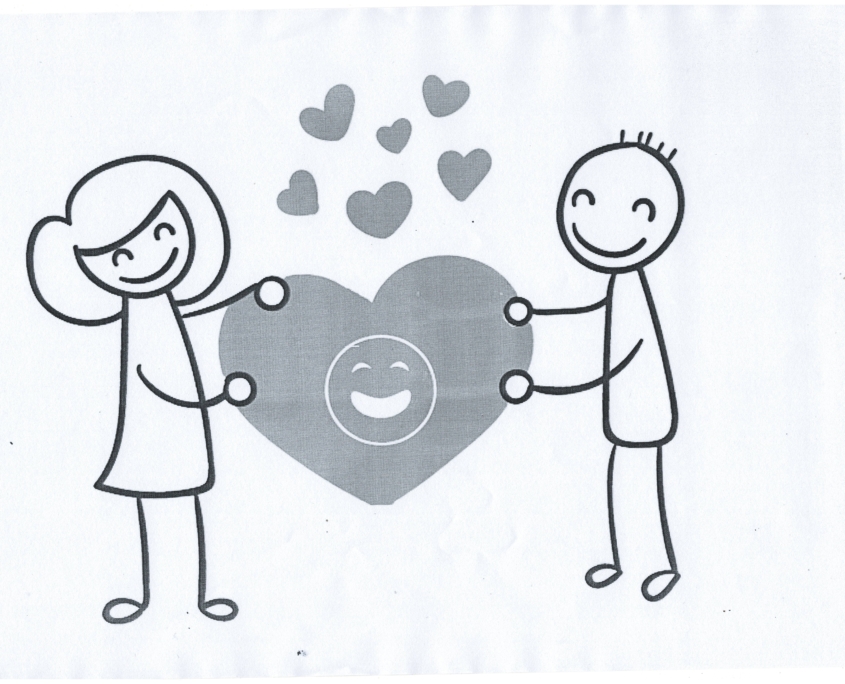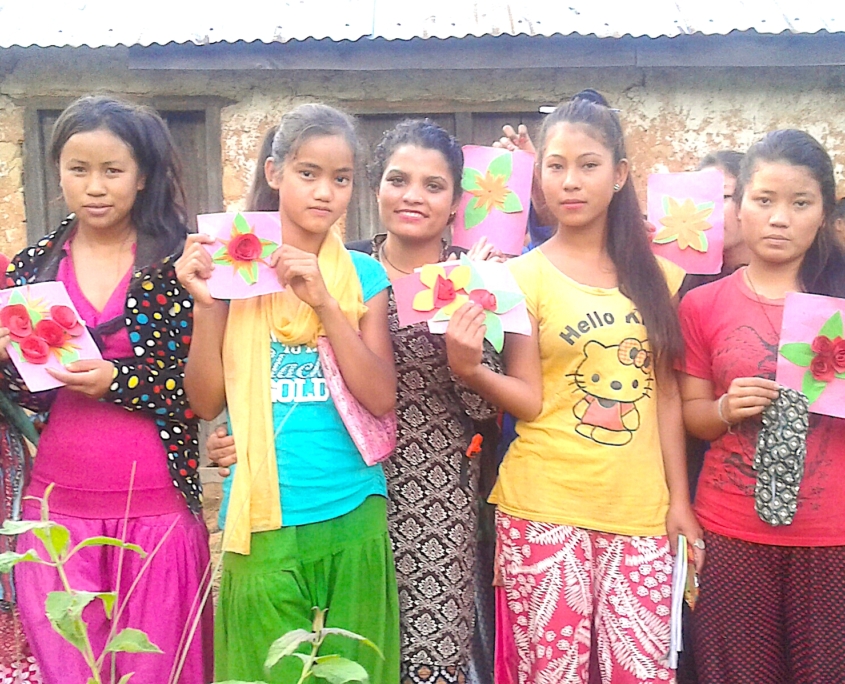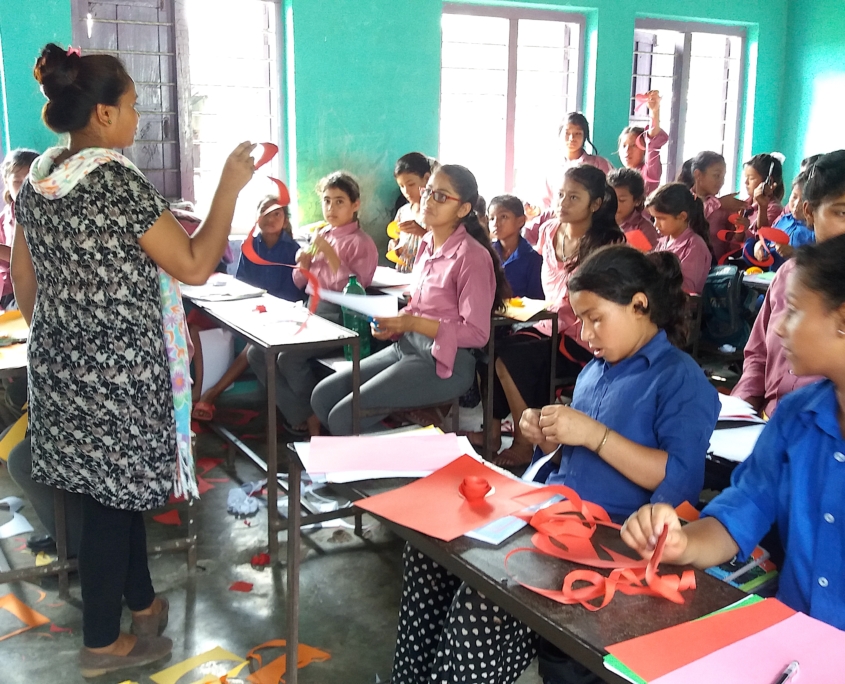Issues on Child Protection in Nepal.
Nepal is one of the poorest and least developed countries in the world. Despite the many projects and programs carried out by government and non government sector that keeps the country afloat, Nepalese children do not have access to all their rights. They must live their lives mired in poverty, malnutrition, violence, and other harmful circumstances.
Nepal remains a highly patriarchal society and minority groups are especially vulnerable. Girls’ and women’s access to social, economic, and political power is limited and they are subject to harmful social norms and practices.
Nepal government has established a number of mechanisms for the protection of children in national and local district/village and municipality levels. The Ministry of Women, Children and Social Welfare (MoWCSW) is the focal Ministry for coordination and collaboration with other sectorial ministries. Other sectoral Ministries, Departments, Offices, Child Rights Officers (CROs), Women and Children Officers (WCOs), Chief District Officers (CDOs), Labor Offices, Central Child Welfare Board (CCWB), District Child Welfare Boards (DCWBs), District Development Committees (DDCs), Municipalities and rural municipalities and schools have also been assigned responsibilities to work for the protection and promotion of child rights.
Nepal has made significant progress in reducing MPI. In terms of poverty trends, the incidence of multidimensional poverty nationally fell from 30.1 percent in 2014 to 17.4 percent in 2019 according to UNICEF’s Nepal’s multidimensional poverty index 2021. It is still lower MPI values than the MPI’ value for all South Asian countries except the Maldives. Nepal’s 2019 MPI value of 0.074 is below Bangladesh’s 2019 MPI of 0.104.
15% of the population of Nepal lives below the poverty line and cannot fulfill their families’ needs. Life for these people deteriorates daily in the face of unrest in the streets, inflation, etc.
Projected programs either government initiatives or organized sector like NGO’s activities seemed not so effectively reached most needy and vulnerable section of people. Poverty is one of major causes that children are not adequately given care and treatment (education, health facilities, fun faire, skills, counselling, creative involvement activities) for all aspect of their creative development.
The Nepalese health care systemhas a serious lack of appropriate materials and competent workers. Health indicators reflect this: more than in 2021, child mortality rate for Nepal was 27.2 deaths per 1,000 live births. Between 1972 and 2021, child mortality rate of Nepal was declining at a moderating rate to shrink from 254.5 deaths per 1,000 live births in 1972 to 27.2 deaths per 1,000 live births in 2021.Children’s health is particularly vulnerable, and they tend to suffer from malnutritionand diabetes. The Ministry of Health, supported by many other organizations, has set up awareness programs, principally directed at mothers, to teach them to recognize the symptoms of childhood illnesses. Though the real situation might be very far from these formal data’s. Children are living with unsound health and lack of neonatal health care and up to 5 years of age children used to be raising without or less care because of parents attends their manual job in the field or else where. Many thousands children have becomes disable within this period of age in Nepali communities.
Education in Nepal is free and mandatory between the ages of 6 and 11. This is not enforced, however, and many children leave school before their 11th birthday. Because of this, only 84% of Nepalese children attend school. Many of community’s children are not going to school because of parental care are not adequately reached behind it, for this there used to be many factors of people’s livelihood.
Large gaps exist between the attendance of girls and boys, due to traditions which dictate the early marriage of young girls and the favoring of boys’ education. Many school’s toilets were also become cause of hindrances for the girl’s continuation in school. Monthly periods become an anxiety and shameful to disclosed it, schools have no environment to support and easy to girls needs.
The educational system is also in a poor state. Factors such as mediocre teachers and a lack of buildings, materials, and personnel, all hinder the chances of attending school.
The Constitution of Nepal guarantees free and compulsory education up to the upper basic level and free education through secondary school. There is a need to understand why attendance rates decrease after lower basic school despite government mandates and free education.
Child labor poses a serious challenge in Nepalese society, this has prevailed an un balanced development of the people of different section. Rural areas children are involving in work than in the Urban settings.
Their duties vary by the job: they could be junk dealers, sweatshop workers, housekeepers, home workers, petty shop servants, local transport cleaners, workers in pebbles crushing or weavers. They become vulnerable to many illnesses through their jobs.
Nepal has nearly 1.1 million children in child labor, accounting for 15 percent of the population of children aged 5-17 years, according to the preliminary findings of a recent ILO Nepal Child Labor Report (2021). Out of them, 222,493 are in hazardous work, exposing them to unsafe and unhealthy working conditions. The second National Master Plan on child labor has unveiled 17 different sectors with high potential of child labor. Out of these 17 sectors, occupations related to agriculture, domestic work, brick-production, entertainment, transportation, and construction are considered to be the ones with the highest prevalence of working children. A recent survey conducted by ILO in collaboration with Central Bureau of Statistics (CBS) unveiled that nearly 17,000 child laborers are involved in brickmaking in the country, mostly seasonal migrant workers from different rural parts of Nepal and India.
Large gaps exist between the attendance of girls and boys, due to traditions which dictate the early marriage of young girls and the favoring of boys’ education. Many school’s toilets were also become cause of hindrances for the girl’s continuation in school. Monthly periods become an anxiety and shameful to disclosed it, schools have no environment to support and easy to girls needs.
The educational system is also in a poor state. Factors such as mediocre teachers and a lack of buildings, materials, and personnel, all hinder the chances of attending school.
The Constitution of Nepal guarantees free and compulsory education up to the upper basic level and free education through secondary school. There is a need to understand why attendance rates decrease after lower basic school despite government mandates and free education.
Due to a pervasive lack of female empowerment and an acute absence of overall awareness, Nepal is facing an enormous dilemma regarding the phenomenon of `girl trafficking’, representing a major crisis in the country, especially as the threat of AIDS is spreading in the Himalayan kingdom. Defined as the enticement or abduction of women and girls into prostitution, it generally entails their being taken out of their familiar surroundings, escorted across the border and sold to brothels, with the majority ending up in Mumbai’s red light district.
Though actual statistics are hard to determine, the number of girls taken to foreign brothels may range between 40,000 and 172,000, with about 20 % under the age of eighteen or twenty. About five to seven thousand are said to be trafficked to India every year. In Mumbai, Nepalese sex workers are believed to make up half the city’s entire brothel population, estimated to total 100,000. 70% are thought to belong to indigenous ethnic groups like Tamang in the majority, but also Gurung, Magar and Sherpa. The reasons concern the clients’ preference for Mongolian features and the impoverished village backgrounds of members of these groups whose menfolk (particularly Tamangs) make up the majority of Nepal’s backbreaking mountain porteringgroups.The largest number come from the districts of Makwanpur, Kavre, Sindhupalchowk and Nuwakot.
Child traffickingis altogether too present in Nepal, mostly because there is not yet a law against pedophilia. Many girls are torn from their families by traffickers because of this. Some will even decide to seek out traffickers themselves, looking for a better life.Once they arrive in cities, the girls are sent to brothels. Some may be as young as seven. Many girls work in urban entertainment sector also trappedsex trafficking ultimately. This sexual treatmentof young girls has hugely negative consequences on their future. Trauma, illness, and psychological disorders become their fate, due to the abuse they have suffered.
Due to a pervasive lack of female empowerment and an acute absence of overall awareness, Nepal is facing an enormous dilemma regarding the phenomenon of `girl trafficking’, representing a major crisis in the country, especially as the threat of AIDS is spreading in the Himalayan kingdom. Defined as the enticement or abduction of women and girls into prostitution, it generally entails their being taken out of their familiar surroundings, escorted across the border and sold to brothels, with the majority ending up in Mumbai’s red light district.
Though actual statistics are hard to determine, the number of girls taken to foreign brothels may range between 40,000 and 172,000, with about 20 % under the age of eighteen or twenty. About five to seven thousand are said to be trafficked to India every year. In Mumbai, Nepalese sex workers are believed to make up half the city’s entire brothel population, estimated to total 100,000. 70% are thought to belong to indigenous ethnic groups like Tamang in the majority, but also Gurung, Magar and Sherpa. The reasons concern the clients’ preference for Mongolian features and the impoverished village backgrounds of members of these groups whose menfolk (particularly Tamangs) make up the majority of Nepal’s backbreaking mountain porteringgroups.The largest number come from the districts of Makwanpur, Kavre, Sindhupalchowk and Nuwakot.
Child traffickingis altogether too present in Nepal, mostly because there is not yet a law against pedophilia. Many girls are torn from their families by traffickers because of this. Some will even decide to seek out traffickers themselves, looking for a better life.Once they arrive in cities, the girls are sent to brothels. Some may be as young as seven. Many girls work in urban entertainment sector also trappedsex trafficking ultimately. This sexual treatmentof young girls has hugely negative consequences on their future. Trauma, illness, and psychological disorders become their fate, due to the abuse they have suffered.
Nepali society too has experiencing uprising complexities in relationship in terms couple life and of family organization. Day by day children are coming up without visible identity. There has been different reason behind this. Nepal, whether a country or a conglomeration of multiple communities, does not yet have an effective government or judicial system. More than 30% of children, for example, are not officially registered with Nepalese authorities. This loophole causes serious problems for their lives. These children are invisibleto society’s eyes, and they cannot take advantage of their rights, including education and health care.
Children issues were not of the greater importance to Nepalese Government till 1980s. Children as a development concern was only included for the first time in the seventh Plan (1985-90). Nepalese children are facing various difficulties due to social beliefs, persistence of poverty,gender discrimination, and illiteracy relating to their development.
Gender discrimination among children can be seen glaringly in Nepalese society from the time
immemorial. This is true for most ethnic groups in Nepal are ethnic communities with their own language this has been very difficult for their children to understand medium of school language.
In distant rural regions, primary schooling is usually given in Nepali, which many children cannot understand. This prevents them from attending school at either the primary or the secondary level.
Gender discrimination is still persisting, causes girls doubly disadvantaged as family faces difficulties arising from economic hardships and related problems such as poverty, disability, homelessness etc. Their specific needs, wants and aspirations are normally always ignored even face the risk of being exploited.
ETSC Nepal has constituted the statement to work for the empowerment of children’s one of its main objectives numbered;
- To help in maintaining the livelihood and health education of orphaned children and other children having acute need of orphanage service and assist them in becoming able citizen of the country.
- Strategic plan 2022 of ETSC Nepal has clearly stated the needs of children and included the priority work intervention in its objectives as follows below;
- To develop creative capacities of children, adolescents, enabling women for equal sharing and men supportive attitude for family development,stated in No.5 objective.
- To improve parenting care of men towards mother and child health and adolescence for promoting community health as well as services of the local public health institutions, stated No.7 objective.
©Brief account of ETSC projects that carried out the activities of Child protection
- 540 School studentsof grade 6-10 taught about human trafficking risk in the classroom.
- Mayur Kishori samula of Padampokhari:30 members group started to take initiative against trafficking as well for saving group.
- Teen age and young laborers who work in stone crossing site were shared message.
- 6 VDC’s as Handikhola, Padampokhari, Churiyamai, Gadi, Hatiya and Harnamadi. 650 most.
- Vulnerable adolescent and women identified for regular coaching and mobilization against trafficking and HIV/AIDS prevention.
- 124 Indian circus worked adolescence have encouraged to opening themselves and facing realities of trafficking.
- Children are selected from 4 VDC’s and one Municipality for scholarship provision; total 34 vulnerable family students received education support.
- Boarder Monitoring & Counseling overseas jobs seekers: 8 girls and 107 job seekers.
Reaching Across the Boarder (HIV AIDS Project)
- Teaching high school students- KAP survey on HIV/AIDS knowledge and behavior. In KAP survey 18 Boys 19 girls participated.
- Hetauda and Basamadi school no of boys 182 and girls 227, Bhainse and Manaharino.of boys 167 and girls 266, learned session.
- Hetauda,Manahari,Bhainse and Bashamadi VDC’s school students conducted 8 events to present Street Drama. Major theme of the street drama was to aware people on risk behavior and HIV transmission enhancing the knowledge of four ways and non ways of HIV transmission.
- 843 student’s knowledge on HIV have increased. knows at least 4 ways and non ways in Handikhola, Rakhsirang and Sarikhetpanlesha.
Case studies / Success stories:
Literacy for Chepang indigenous community.
- Total no of participants attending NFE class; 120 people among them, no. of participants of age 16-20: were 55 adolescence learned session.
- 15 children (6 boys 9 girls) of neo-literate provided health check-up and medicine.
Women Empowerment through small business to Prevent Trafficking
Monitoring Booth: Monitoring on transit station to boarder (Booth to investigate passers, DAO information desk, Informer incentives) Intercept and Rescue
- Community Peer Watch group of Handikhola VDC has traced a case of trafficking and a young women brought back from Delhi from the day she was made reached was 19th day.
- Eleven teens were caught in Hetauda while they were taking to India for labour afterwards they were handed to their parents through police.
- Nine teens and 2 youth girls are caught who were heavily affected by earthquake and guided by trafficker agent to India. The traffickers had been searched by government authority after the victims gave their speech against him in the court.
DAO information desk
This office is located at District Administration Office premisesof Makwanpur, where people make their citizenship identity card and passport. The district level network against trafficking initiate to established this unit to monitor the people those comes for making citizenship and passport. ETSC has one volunteer staff to involve in monitoring as well counselling those people at the point they seemed vulnerable or at risk. 2017 January to December 181 women counselled, 6 men counselled. And 4 people were stopped to make passport further because they were under age but came by fraud agent during 2015.
Monitoring Booth
From the month of January 2017 to till date of December total 1231 men and women were interrogated, 14 girl child rescued 16 boys rescued 21 women rescued. Counselling provided at booth; 55 men’s and 350 women and 150 children.
Shelter and aftercare for restoration
The people who goes to under the process for their cases needed to have a temporary shelter to live. Total 51 people were provided shelter with the coordination of other organization’s. These people need counselling and support to open up towards the making application against risk and trafficking. No of 14 girls 16 boys kept in shelter, 21 women provided shelter and aftercare.
Peace building Initiative:
- Forgiveness and Reconciliation Workshop: The workshop helps people to share their grievances and bitter experiences of life among participants. People are able to share their feeling in a common platform this helps people to get healings and comfort.
- Training on Conflict Resolution: Training helps youths to understand and mobilize for addressing conflicts in long terms. Conflict resolution training is also useful in conflict transformation and strategic peace building processes. 73 youths took part in conflict resolution training conducted at Churiyamai and Padampokhari VDC.
Educational Support:
- Over head Water tank construction: Vulnerable children are being helped for safe drinking water. ETSC has constructed 10-thousand-liter capacity safe drinking water for Mahendra secondary School in Padampokhari, Hetauda Municipality -1
- Highly marginalized 45 students were provided educational support in 3 districts namely Makwanpur, Bara and Khotang.
- Makwanpur, 8 VDC’s and one Municipality; Handikhola,Padampokhari, Rakhsirang,Sarikhet, Manhari, Basamadi,Gadhi, Churiyamai and Hetauda Municipality ward no. 7,8,11.
CHF will deliver support to the most disadvantaged women and children by; increasing knowledge of maternal and child health. We will establish 25 Women’s Health Committees (WHC) per year for three years, who, supported by a Men’s Support Group (MSG), will each develop and oversee a health and literacy education programme for women and adolescent girls in their ward.
Enabling women to generate income and joint savings schemes to pay for safer health practices. We will develop a business skills and savings skills toolkit to help local women transform their subsistence activities into small scale income generating ones. We will also provide technical support such as growing specialist crops.
Lobbying for improvements in mother and child health services. Nine Maternal Health Committees, made up of men and women, will lobby for improvements in mother and child health services through government medical centers, health posts and Sub Health Posts. Collectively they will lobby national government for improvement sin long term sustainable mother and child health.
- 25 Adolescent Girl Groups were formed where the members are daughter and sister-in law of WHG's age between 11-17 years of age. In total, 925 adolescent girls were benefited by this programe. 13 sessions of Maternal and Child Health along with sexual and reproductive health are delivered to them with focus on skill development activities. 125 participants were given a training of cloth menstruation pad sewing where 5 members from each group were participated. From school education programe, 644 school students of grade 6,7,8,9 and 10 (Handikhola ,Gadhi,Padampokhari ,Hetauda-11 and Basamadi ) were benefited from programe which was organized by AGG member. In each group we had conducted the quiz contest and paper flower making technique. We have given a doll and head band sewing training to the interested participants of group and in total 162 members were trained. Some of group organized the street drama on MCH issues and women violence.
- In each 25 Adolescence girls group, 37 girls aged 11-17 years will benefit from a creative and engaging programme of mother and child health activities. At least one third of adolescent girls will come from marginalized backgrounds including orphans, women headed households or girls with disabilities.
- Adolescent/young girl Maternal Health education training; adolescence learned “Creative Adolescence”
Making sanitary pad:
After receiving the one-day training on sewing cloth menstruation pad by AGG volunteer (Miss AnishaRai), organized the sewing cloth menstruation pad / homemade menstruation pad training to 12 AGG members of project implemented areas. Cloth menstruation pads are environment friendly and do not contribute to land fill as they are reusable and do not come in or contain plastic packaging. These are more economical and made without chemical. Therefore, training may help the adolescent girl to use homemade pad and establish their income generation activities as well keep them healthy menstruation period. Reduce the amount of waste products and may also have health benefit.
- 25 Adolescent Girl Groups were formed where the members are daughter and sister-in law of WHG’s age between 11-17 years of age. In total, 925 adolescent girls were benefited by this programe. 13 sessions of Maternal and Child Health along with sexual and reproductive health are delivered to them with focus on skill development activities. 125 participants were given a training of cloth menstruation pad sewing where 5 members from each group were
participated. From school education programe, 644 school students of grade 6,7,8,9 and 10 (Handikhola , Gadhi,Padampokhari ,Hetauda-11 and Basamadi ) were
benefited from programe which was organized by AGG member. In each group we had conducted the quiz contest and paper flower making technique. We have given a doll and head band sewing training to the interested participants of group and in total 162 members were trained. Some of group organized the street drama on MCH issues and women violence.
Survey of needy Children in Gadhi VDC:
Twenty-five children were selected for healing sessions and assessment. These needy children suffering from psychosocial problem provided individual assessment, healing session and further assistance according to their need.
Psychosocial healing sessions:
After the triage of the client’s, counselor provides them session on the topic of psychosocial problem, different types of distraction game and individual counseling to each clients etc. because this healing session make clients to express their feelings and somehow it’s also help to feel them relief while interacting with the counselor. 26 people were provided psychosocial healing session.
Healing sessions for Children:
25 children provided psychosocial healing sessions among them, 12 children recommended for further counseling support, care and assistance.
In Handikhola
2 days healing sessions was conducted in school and 57 students were participated out of that 13 were assessed as psychosocial problem and needed further treatment or assistance. 34 parents of student were given psychosocial need and healing sessions.
Follow up counseling for Children:
Psychosocial counselor visited 12 children and normalized their problem, parents also counseled for their approach in order to make reach help for children recovery. Other 14 children also visited and counseled for their continuing school.
Children’s (student) parent orientation:
After the earthquake student were discontinuing school, at the request of local high school 58 parents were sensitized about the consequences of psychosocial issues on how to deal and behave children for their encouragement for continuing schooling.
Psychosocial therapy for children’s parents:
Therapy of clients, Home visit and counseling:Psychosocial counselor continues to look after people those needed further psychiatric assistance.7 clients received home visit counseling among them 4 clients admitted psychiatric consultant service with medication. These client’s parents were also counseled at their door.
Adolescent initiation
With the coordination of WHG, MSG and MHC, for the dissemination learning of adolescent girls group (Basamadi -3) conduct street road play on the against of human trafficking and it’s complication at Mnahari. The drama was watched more than 300 public people. As a result, people are aware about young age marriage and cause of human trafficking and its consequences.
District level drawing poster competition:
On the date of 27th December we organized drawing poster competition in title How we can improve the maternal and child health among the AGG members at ETSC-N hall. The judge are from District Development Committee, District Education Office, District Public Health Office, Women and Child Development Office and one AGG volunteer. Total 18 AGG member are participated and first and prize was won from Padmpokhari, 3rd was from Hetauda 8 and 4th place was from Churyamai. This competition make courage participants learn and gain more knowledge about maternal and child health.
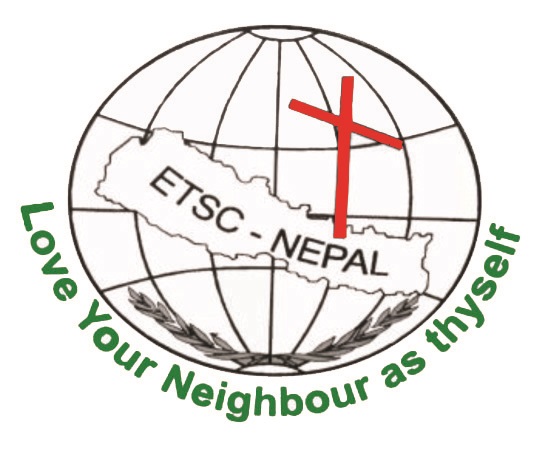
ETSC Nepal
You are welcome to extend helping hands in the mission of the ETSC-Nepal.
Project
- DRR
- EES
- EVPM
Contact Us
- Hetauda-15,Farline
- Tel 977-57-523375
- Cell: 9819259624
- Email:etscnpl1@gmail.com
- Toll Free(NCELL):+977-9801571371


